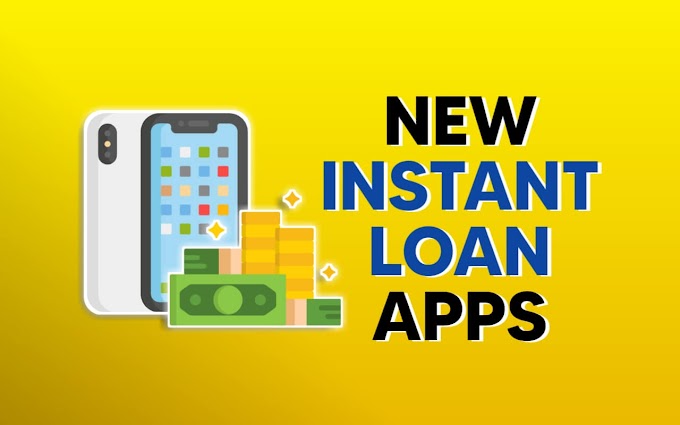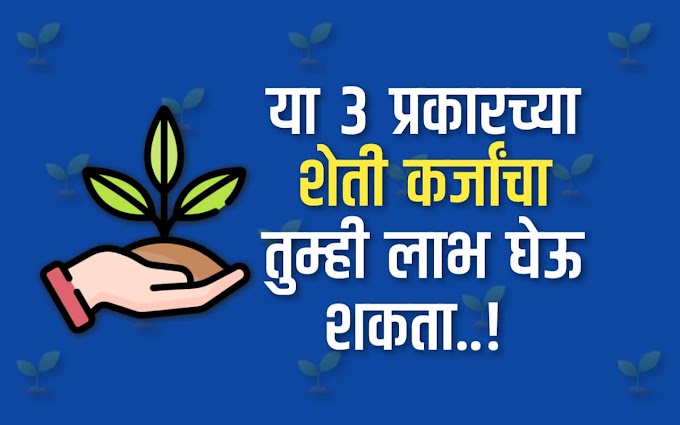To buy something, to do some task, for growing business or for any personal work, when someone borrows money from a Bank or Financial Institute as per their terms and conditions, it is known as Loan. The customer has to return the total principal amount i.e. Loan amount with specified interest rate to that Institute in the form of EMI (Equated Monthly Installment).
So guys, today we will see how many different types of loans are provided by Banks & Financial institutions in India.
So let's begin
Read it in:
English (normal-bt) Marathi (normal-bt) Hindi (normal-bt)
Table of Content (toc)
Types of Loans in India
Types of Loans based on Time Duration
According to time period loans are classified into three types, which are -
Short-term Loans
Loans and advances granted for a period of 1 to 2 years
Medium-Term Loans
Loans and advances granted for a period of above 1 year and up to and inclusive of 3 years.
Long-Term Loans
Loans and advances granted for a period of above 3 years.
Two Major Loans Category
Broadly various types of loans available in India are classified into two major categories on the basis of purpose they are used.
- Secured Loans
- Unsecured Loans
What is Secured Loans?
A secured loan is a loan backed by collateral—financial assets you own, like a home or a car, etc that can be used as payment to the lender if you don't pay back the loan.
The idea behind a secured loan is a basic one. Lenders accept collateral against a secured loan to incentivize borrowers to repay the loan on time. After all, the prospect of losing your home or car is a powerful motivator to pay back the loan, and avoid repossession or foreclosure.
Types of Secured Loans:
Loan taken for buying or improving the infrastructure of a home is called a home loan. Bank offers home loan of upto 75 - 85% of the total amount. eg. If your home costs 10 lakh rupee, then you have to pay 30% i.e. 3 lakh as down payment. Remaining amount can be paid in the form of EMI within a 10 - 20 years period. There are also some extra charges associated with home loans.
To get a gold loan you have to pledge gold jewelry or coins as collateral. The loan amount given by banks & financial institutions is around 80% of the actual gold value pledged. Generally people opt for gold loans to fulfill their emergency needs. Gold loan interest rates range around 10% to 12%.
- Loan against Property (LAP)
A Loan against Property is a secured loan availed against a commercial or residential property kept as collateral with the lender. This asset can either be an owned land, a house, or any other commercial premises. Borrowers can get 40-60% of the actual value of property for around 15 years tenor.
The asset remains as collateral with the lender until the entire loan against property amount is repaid. As the funds come with no end usage restriction, borrowers can utilise the funds for various purposes such as business expansion, wedding, child's education, etc.
- Loans against Securities (Mutual Funds and Shares)
To get LAS (Loans against Securities), you have to pledge securities papers as collateral. Typically you can get 60-70% of the value of securities pledged as a loan. If you are unable to pay back the loan amount, then Banks & Financial Institutes sell those securities in the market to remunerate the amount. Some banks also provide Overdraft facilities in exchange for securities.
A personal overdraft is a credit facility that allows you to withdraw an amount as and when needed. You can also repay the withdrawn amount at your convenience. Hence, it is one of the most preferred credit options availed to meet varied personal funding requirements without limit. it also includes -
Loans against Fixed Deposits: Loan against Fixed Deposit is a secured loan, where you can pledge your FD as collateral, in return for the loan amount.
Loan against Insurance Policies: Loans against insurance policies are sanctioned only when traditional policies such as money back and endowment policies are pledged
What is an Unsecured Loan?
An unsecured loan is a loan that doesn't require any type of collateral. Instead of relying on a borrower's assets as security, lenders approve unsecured loans based on a borrower’s creditworthiness. Examples of unsecured loans include personal loans, student loans, and credit cards.
Types of Unsecured Loans:
It is a loan taken for self needs, like to pay home rent, school fees, to buy gifts for someone or to fulfill monthly living expenses. Every bank has their own interest rates on personal loan schemes. Currently personal loan interest rates charged by various banks range from 9% to 40%
Checkout current interest rates on personal loans
Personal loans interest rates are the highest as compared to other types of loans in India. Banks provide personal loans on the basis of your monthly salary statement. It has a maximum tenor of 5 years.
A revolving loan facility is a form of credit issued by a financial institution that provides the borrower with the ability to withdraw, repay, and withdraw again. A revolving credit account sets a credit limit—a maximum amount you can spend on that account. You can choose either to pay off the balance in full at the end of each billing cycle or to carry over a balance from one month to the next, or "revolve" the balance. A revolving loan is considered a flexible financing tool due to its repayment and re-borrowing accommodations. Examples of revolving credit include credit cards, personal lines of credit and home equity lines of credit (HELOCs). Credit cards can be used for large or small expenses; lines of credit are generally used to finance major expenses, such as home remodeling or repairs. A line of credit allows you to draw money from the account up to your credit limit; as you repay it, the amount of credit available to you rises again.
Agriculture loans in India are offered to farmers for various purposes, like farming and irrigation equipment purchases, crops for cultivation, and other agriculture-associated activities. Besides farmers, these loans are also available to individuals engaged in other agri-related sectors like animal husbandry, horticulture, apiculture, aquaculture, silk farming, and floriculture.
- Short-term Business Loans
Banks provide business loans to established companies, business or startups so that they can expand.
A Flexi Loan is similar to an Overdraft facility provided by banks. As a borrower, you can withdraw the loan amount you require from the credit limit pre-approved by the bank. ... You get the flexibility to pay the outstanding loan amount as and when you want to pay, but you need to pay the interest every month
Not every student has the financial capacity to pursue education in their desired college and university. Banks and Financial Institutes provide education loans to capable students on the basis of certain criteria and conditions. Students can repay loans after completing their education.Many banks usually provide various vehicle loan schemes to buy vehicles like cars, motorcycles, etc. It is provided for different periods and different interest rates like fixed or floating rates. Until the whole amount is paid the vehicle is owned by the bank.
![Loan - My Knowledge Hunt [Marathi]](https://blogger.googleusercontent.com/img/b/R29vZ2xl/AVvXsEhDSj6OEESQRvRtmIYoBphyC0P2Fh8W3Ym3fx6CORZarKYxUh3wkOgbQtLAfDc9Td8XPD6-2XVwZJl0xdMwytOQxZ2FU568xQHa0iYLv7Qu_qWOcLF_X9tEq4mnu__uBJRizbsgudVKdjSI/s294/Loan%252C+types+of+loan+in+India.png)







![Loan - My Knowledge Hunt [Marathi]](https://blogger.googleusercontent.com/img/b/R29vZ2xl/AVvXsEiyAvCMSbuZbCPMU7qrIDAWPUoYeIBGs0EWcB1fuzA-__vtG-amO89XKpMYlP2DMnn_RC1XYnObrLPnk76XUPhZ4kukwSMPqWQQvumMIOJemgwngVoxfKudqzYRuwLyphh3fHZamS-3MxkZ/s294/Loan%252C+types+of+loan+in+India.png)